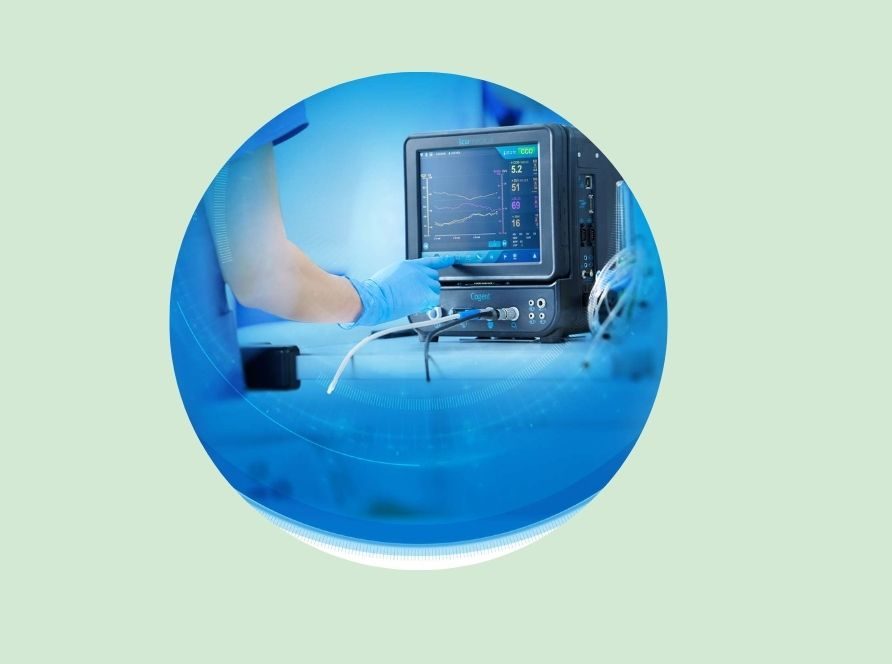Global Hemodynamic Monitoring Market Valued $1.04 Bn In 2021 And Will Grow With A CAGR Of 6% By 2026
The growing prevalence of cardiovascular diseases, COPD and other respiratory diseases; development of next-generation non-invasive and minimally-invasive systems; and rapid growth in the number of surgical procedures are some of the key factors driving the Global Hemodynamic Monitoring Market.
The Global Hemodynamic Monitoring Market valued at $1.04 billion (2021) is set to witness a growth rate of 6% in the next 5 years. Uncontrolled perturbations in circulatory function during surgery can lead to tissue hypoxia, resulting in perioperative morbidity and mortality. Hemodynamic monitoring provides information about the adequacy of a patient’s circulation, perfusion, and oxygenation of the tissues and organ systems delivering safe anesthetic care.
Technological Progresses In Hemodynamic Monitoring Systems
Continuous advances in critical patient care have enabled to development of efficient hemodynamic monitoring systems featuring non-invasive technology and expanded parameters such as continuous BP measurements, and measurement of cardiac output by pulse contour method, among others. Major market players are continuously focusing on investing in research activities for new product development and expanding their geographic reach to strengthen their positions in hemodynamic monitoring market.
Some Of The Technological Advancements Are Listed Below:
- In July 2022, Retia Medical received Series B funding of $15 million led by Fresenius Medical Care Ventures to expand its commercial team and accelerate the development and commercialization of its Argos Hemodynamic Monitor
- In February 2022, Caretaker Medical received the US Food and Drug Administration (FDA) clearance to add four new parameters on its next-generation VitalStream wireless ‘beat-by-beat’ blood pressure and hemodynamic monitoring platform, including stroke volume, cardiac output, left ventricular ejection time, and heart rate variability
- In March 2021, Philips introduced its interventional hemodynamic system featuring a patient monitor- IntelliVue X3 to provide advanced hemodynamic (blood flow) measurements and improve patient focus during image-guided procedures
- In October 2020, Getinge launched NICCI, an innovative advanced hemodynamic monitoring solution that provides continuous and non-invasive hemodynamic insights reducing the risk of severe complications in patients with low blood pressure
Explore Premium Report on Hemodynamic Monitoring Market.
Upward Prevalence Of Cardiovascular Diseases (Cvds) To Boost Adoption Of Global Hemodynamic Monitoring Market
Innovative hemodynamic monitoring methods have the ability to enhance the monitoring of cardiac patients during post-operative care and anaesthesia providing precise and repeatable measurements to detect hemodynamic abnormalities and their causes. Cardiovascular diseases are one of the leading causes of death across the globe. Coronary heart disease, cerebrovascular disease, rheumatic heart disease, and other illnesses are among the group of heart and blood vessel disorders known as CVDs.
- According to WHO, 32% of all deaths across the globe i.e., 17.9 million people die due to CVD every year
- As per CDC, 659,000 people in the US die from heart disease every year; heart disease costs $363 billion each year in the US which includes the cost of medicines and healthcare services
- Coronary heart disease alone killed 360,900 people in 2019 in the US and over 18.2 million adults suffering from coronary artery disease live in the US
- 805,000 people suffer from a heart attack in the US every year of which 605,000 are a first heart attack while 200,000 happen to people who already had a heart attack
- According to European Heart Network, CVDs account for over 3.9 million deaths every year in the European region, out of which over 1.8 million deaths occur in the European Union (EU)
Also, the rising geriatric population prone to heart defects due to progressive deterioration in the structure and function of the heart largely contributes to the high burden of CVDs; thereby triggering the increased adoption of hemodynamic monitoring systems.
Competitive Landscape Analysis of Hemodynamic Monitoring Market
The hemodynamic monitoring market is marked by the presence of key players such as Edwards Lifesciences Corporation (US); Getinge AB (Sweden); LiDCO Group (UK); Koninklijke Philips N.V. (Netherlands); ICU Medical (US); and others.
For More Comprehensive Insights, Contact Us.
About Medi-Tech Insights
Medi-Tech Insights is a healthcare-focused business research & insights firm. Our clients include Fortune 500 companies, blue-chip investors & hyper-growth start-ups. We have completed 100+ projects in Digital Health, Healthcare IT, Medical Technology, Medical Devices & Pharma Services.
Contact:
Ruta Halde
Associate, Medi-Tech Insights
+32 498 86 80 79
info@meditechinsights.com
Summary
The Global Hemodynamic Monitoring Market valued at $1.04 billion (2021) is set to witness a growth rate of 6% in the next 5 years.
Source
https://meditechinsights.com/hemodynamic-monitoring-market/


Leave a Reply
You must be logged in to post a comment.